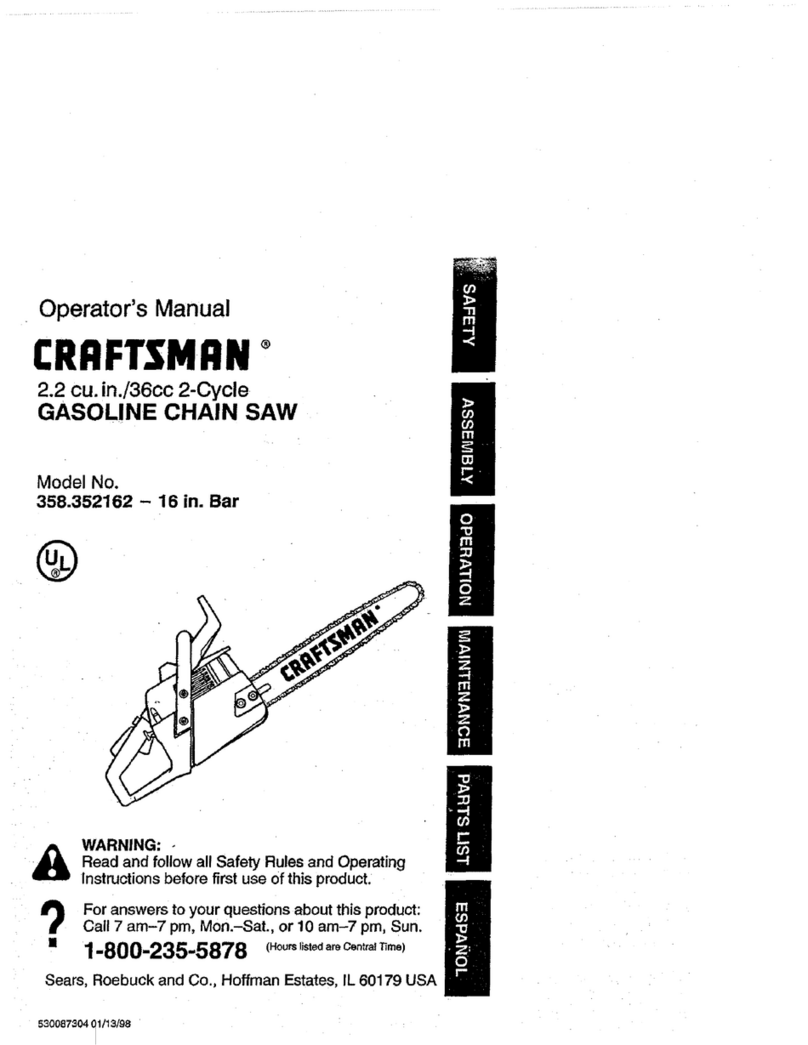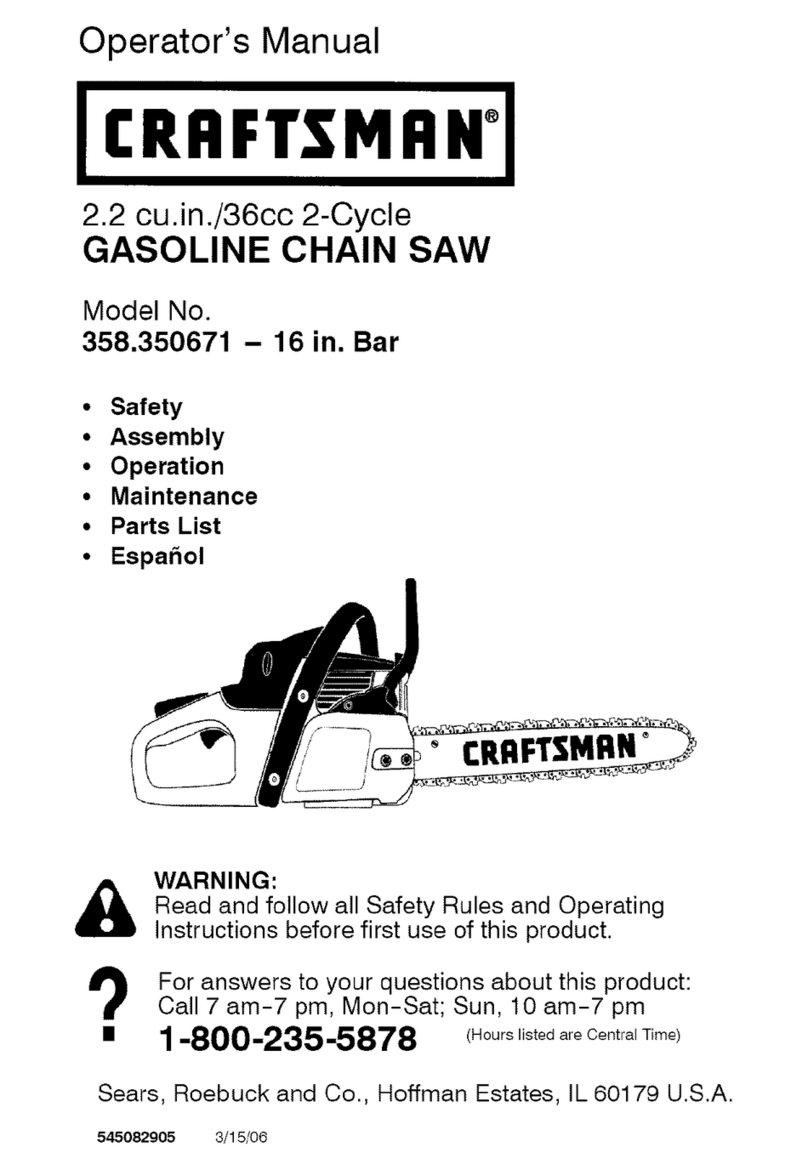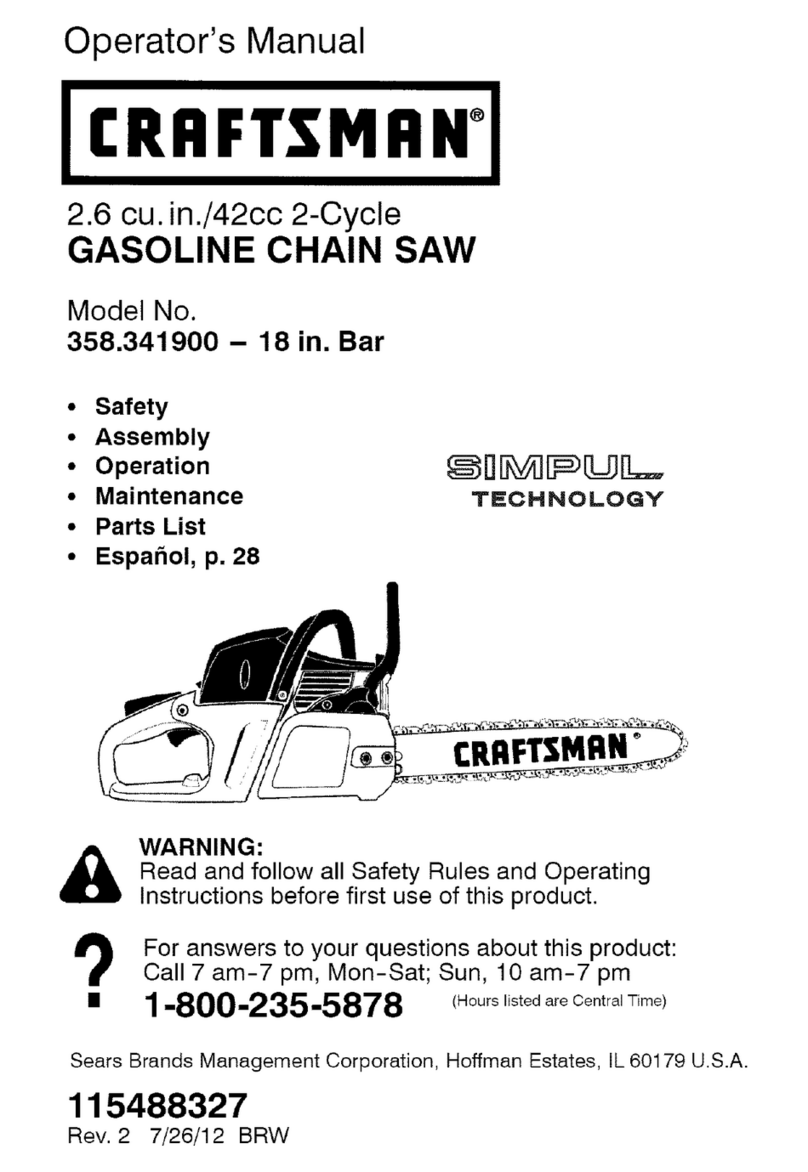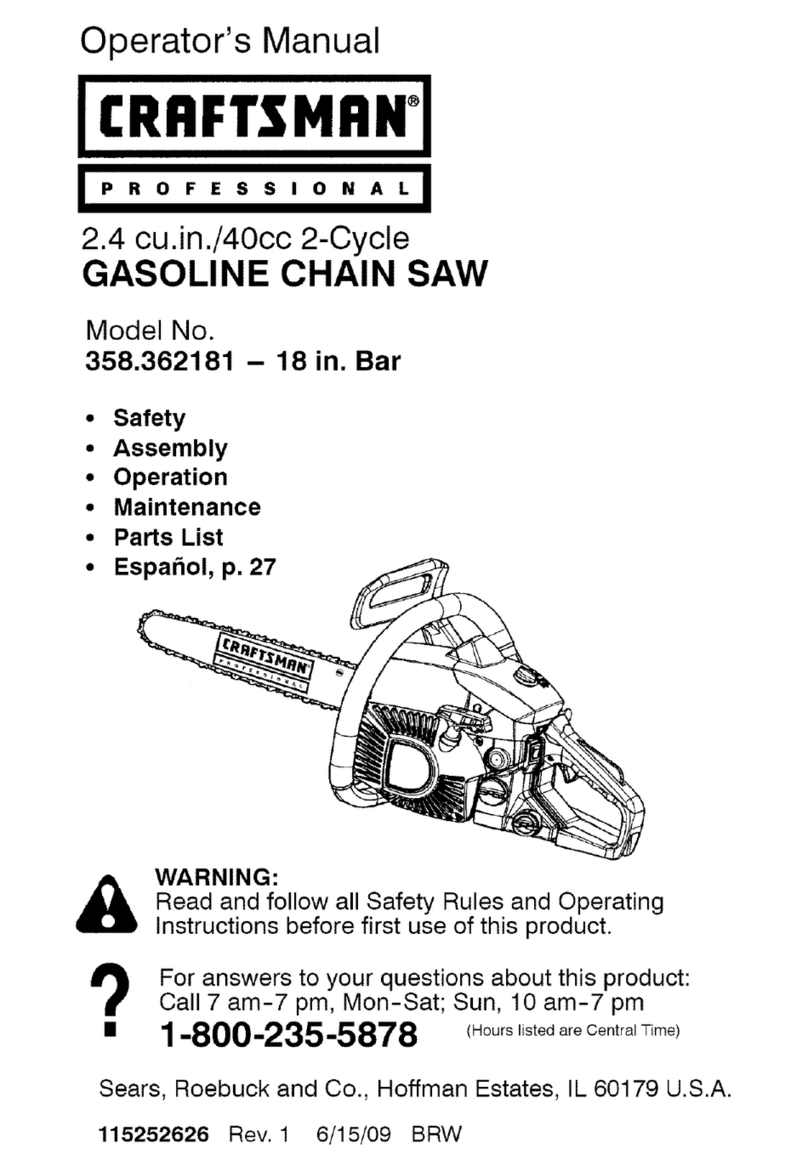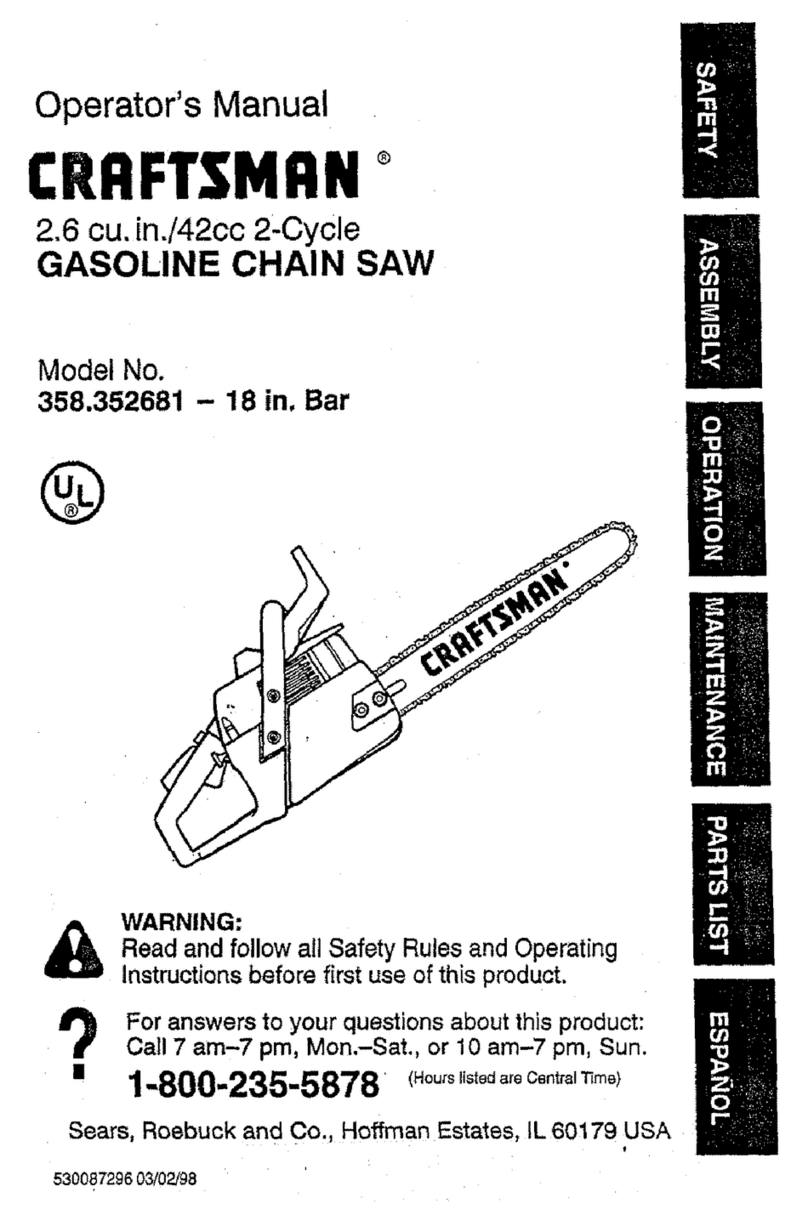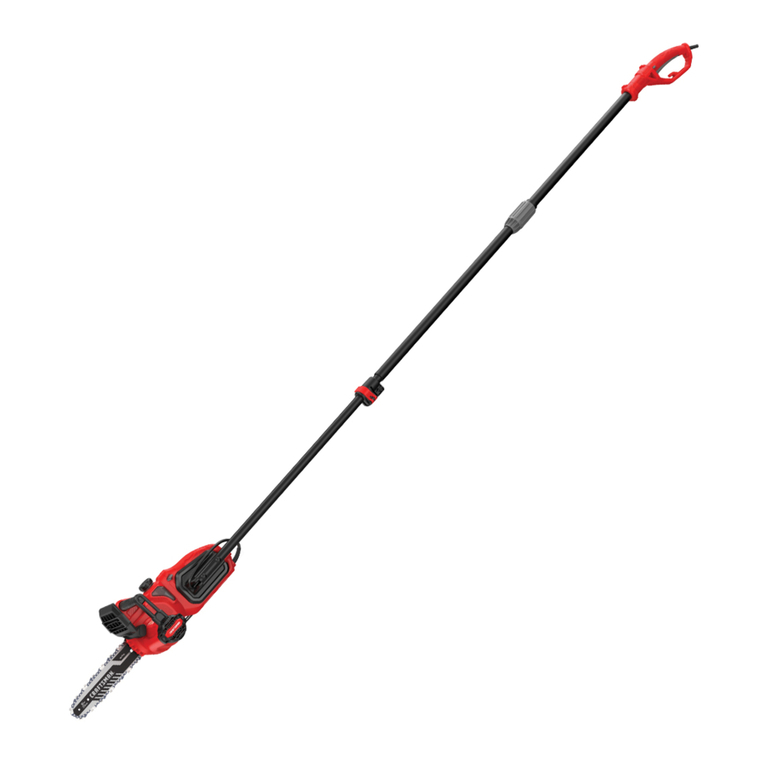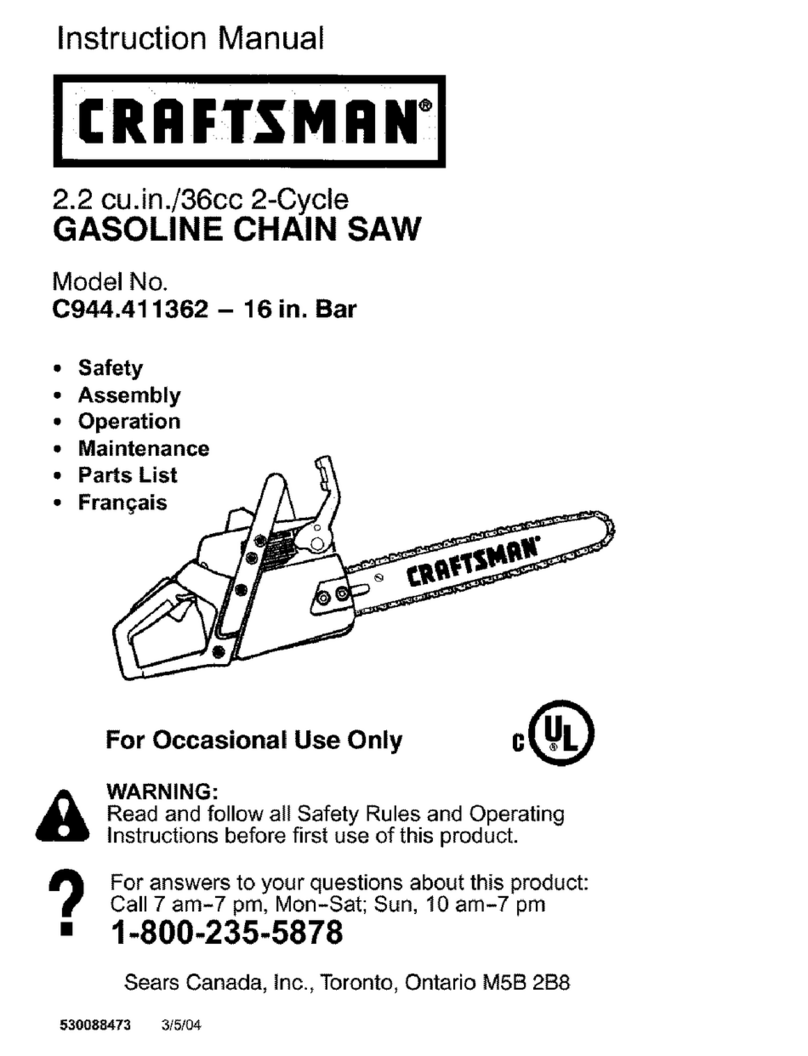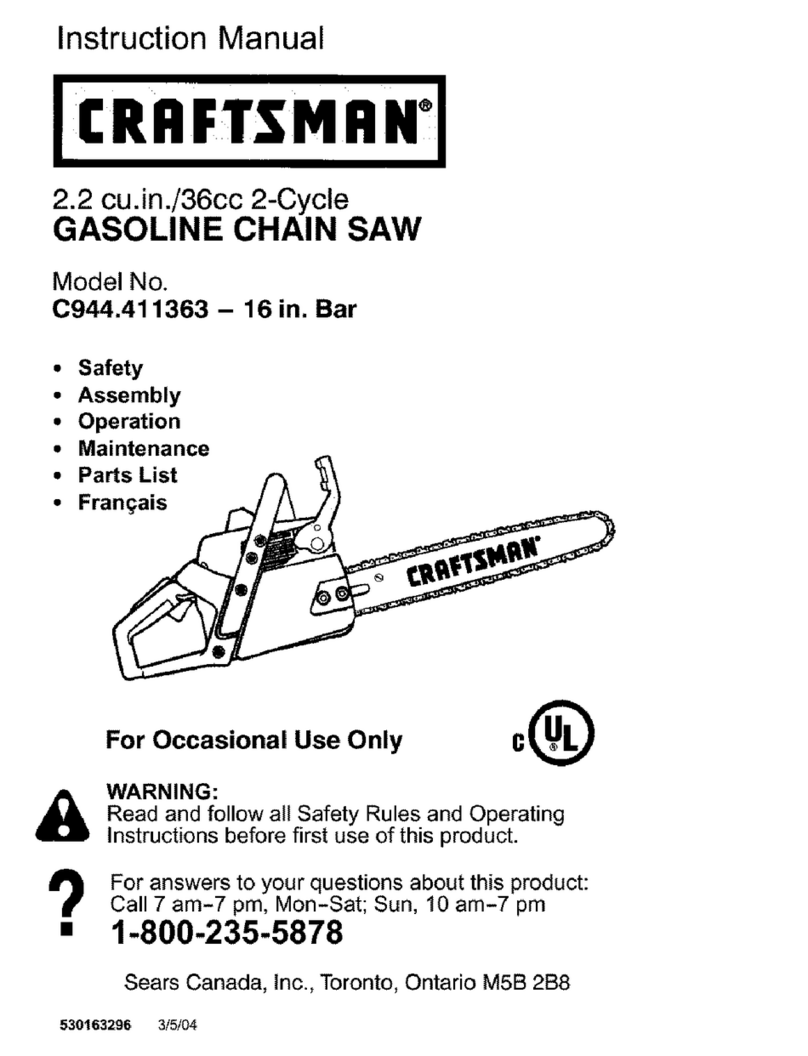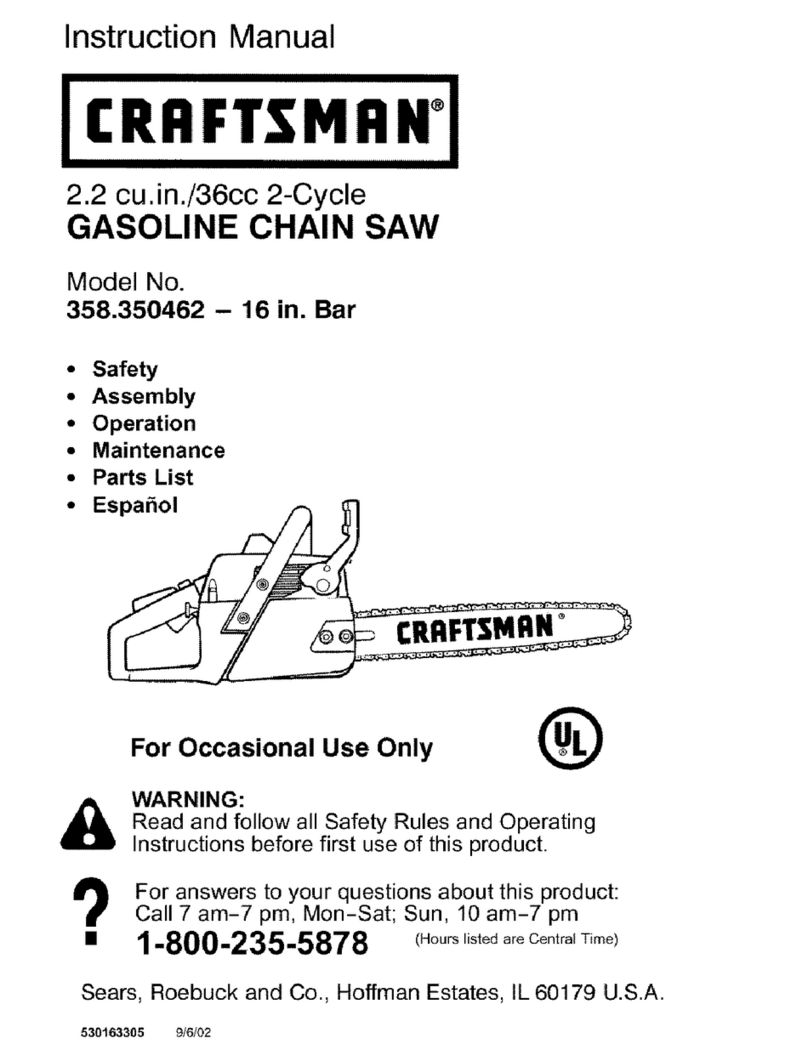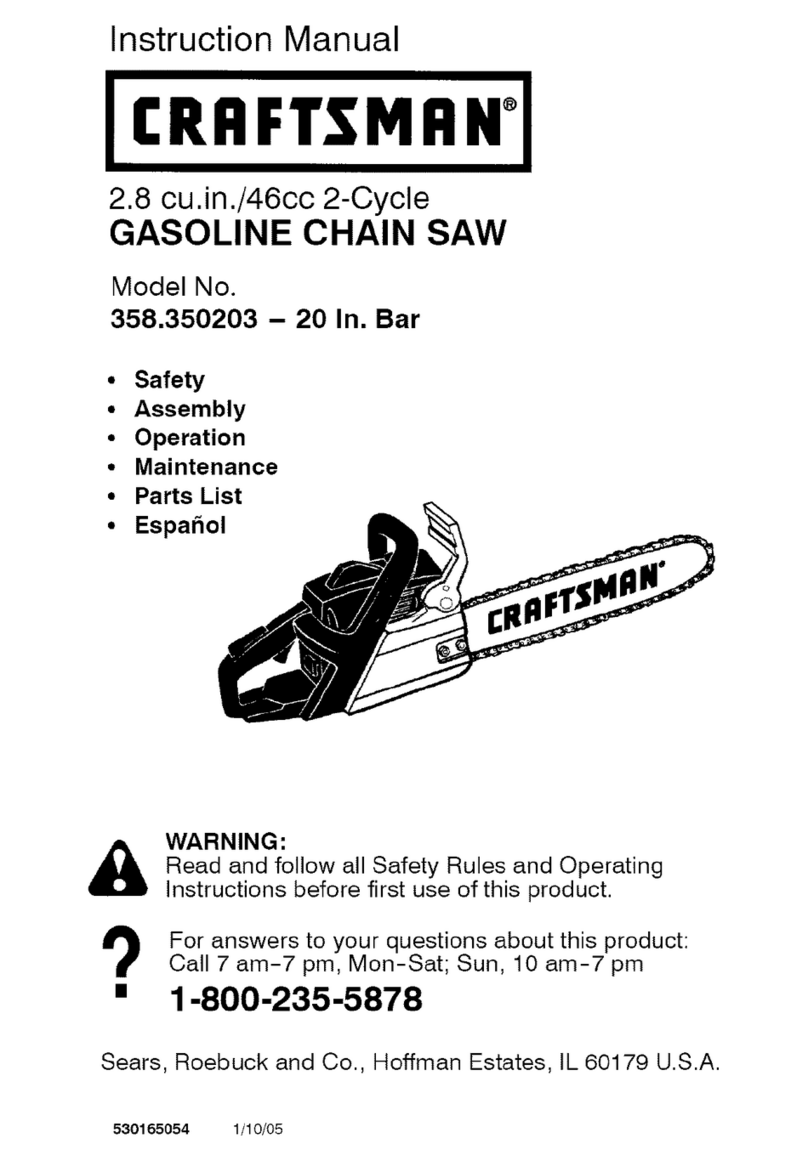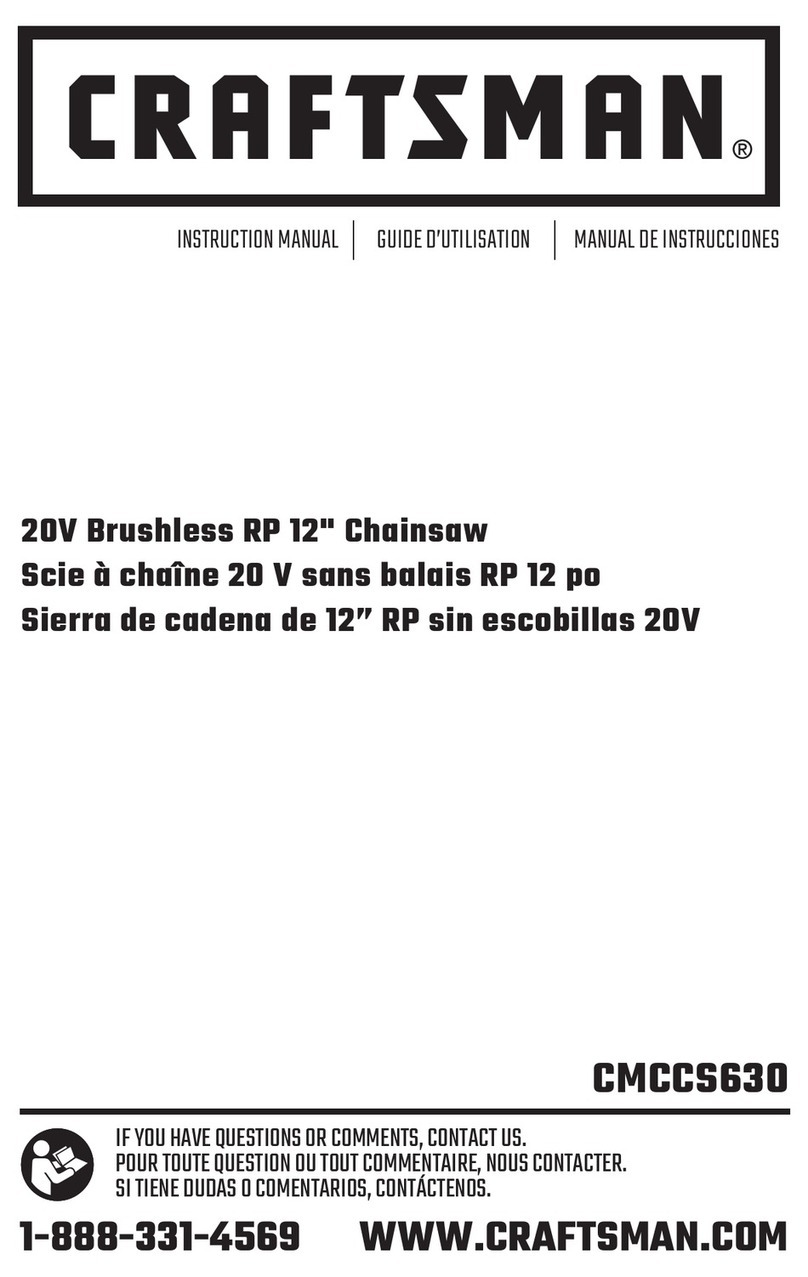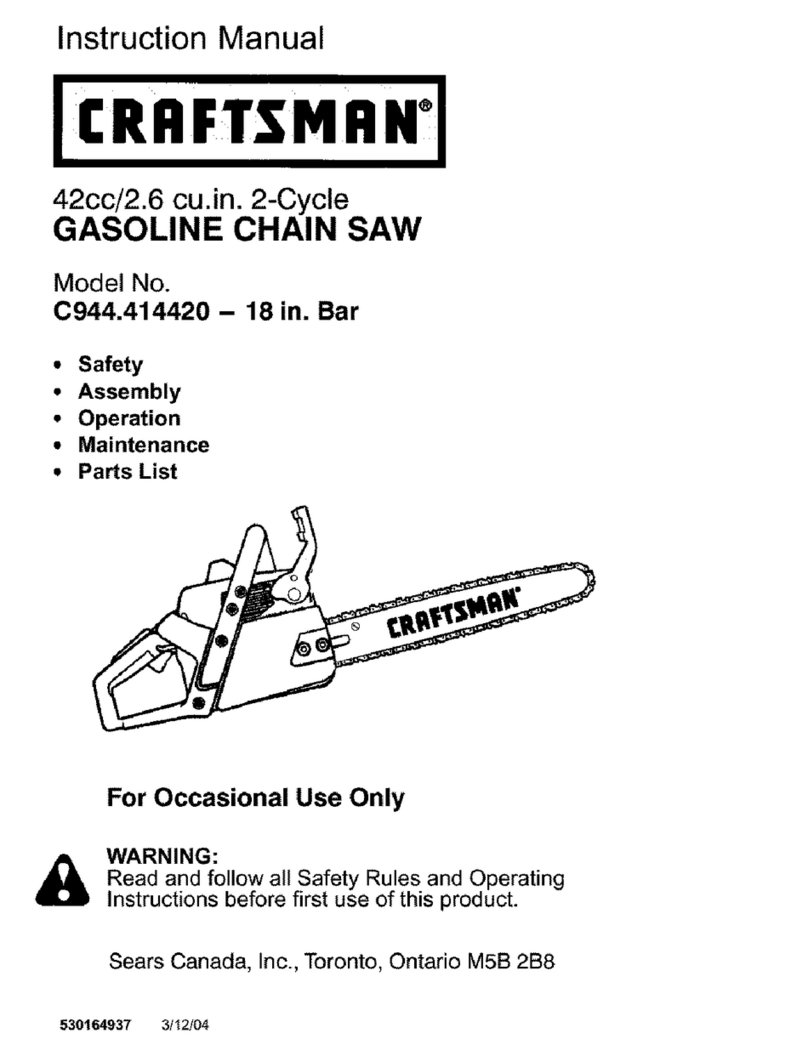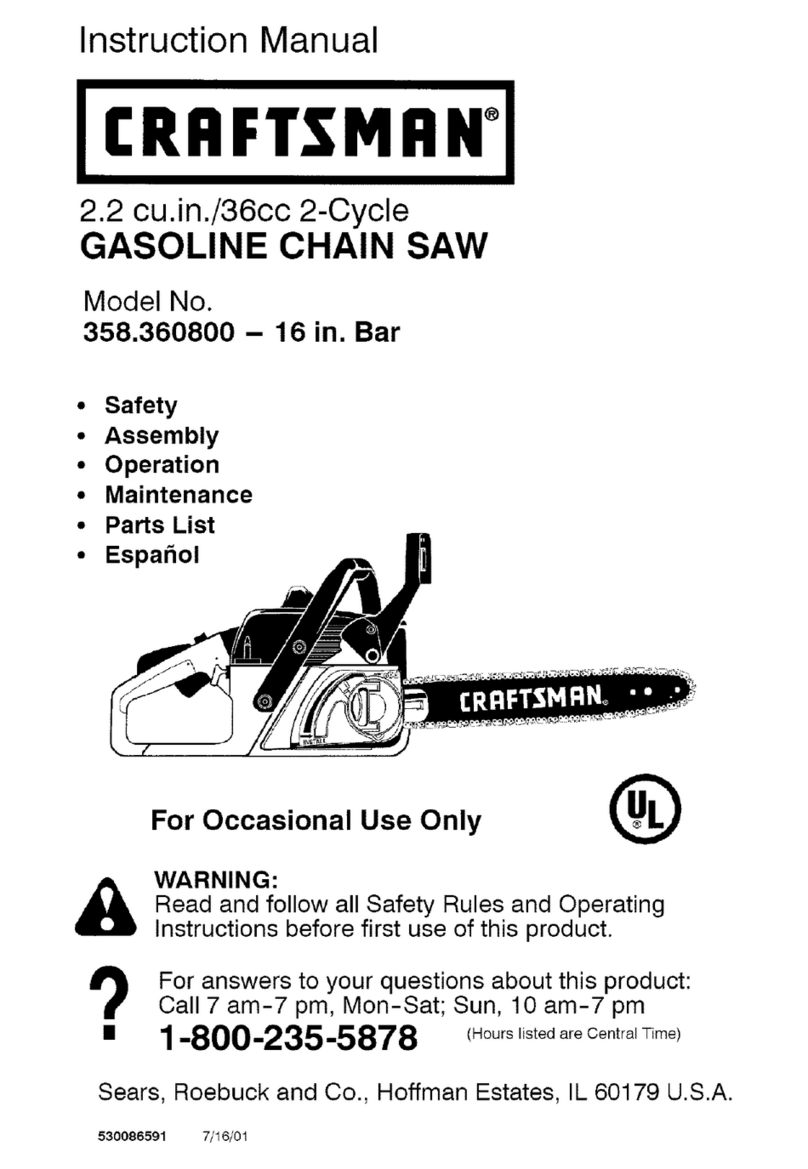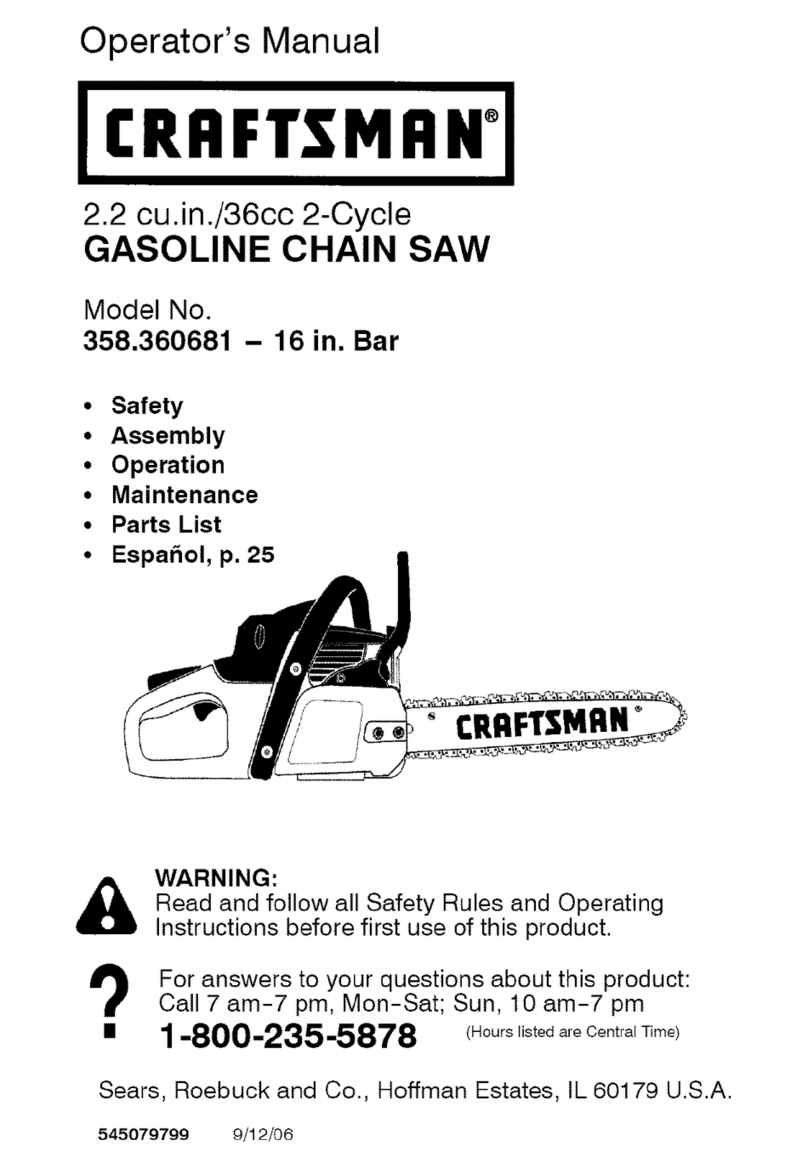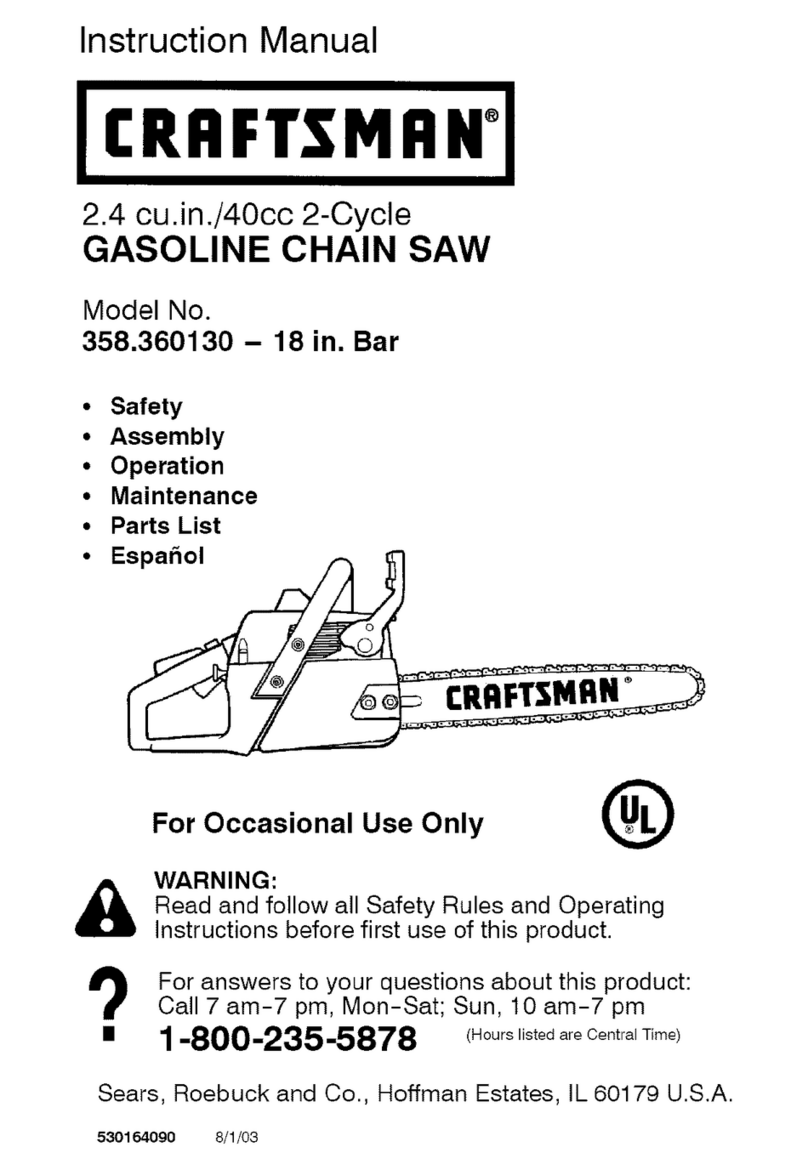dication.You mustbe in good physical
conditionand mantallyalert, fi you have
any conditionthat mightbe aggravated
by stranunuswork, check withdoctor
beforeoper_ng.
Watch whet you ere doing. Use com-
mon sense.
• Do not start cuttinguntilyou have a
clear work area, secure footing, and
especially if you are fellingatree, a
retreat path. Keep work area clean.
Cluttered areas invite injuries.
OPERATE YOUR SAW SAFELY
• Do not operate with one hand. Seri-
ous injuryto the operator, helpers, or
bystanders may result from one-
handed operation. A chain saw isin-
tended for two-handed use.
•Do not operate saw from a ladder or
ina tree.
•Make sure the chain willnot make
contact with any object while starting
the saw, Never start the saw when the
guide bar is in a cut,
• Don't force chain saw. Itwill do the job
better and safer at the rate for which it
was intended.
• Do not put pressure on the saw, es-
pecially at the end of the cut. Doing
so can cause you to lose control
when the cut is completed.
•Stop the saw before setting it down.
Hand carry saw only when motor is
stopped. Carry the chain saw by the
front handlewith the saw stopped, fin-
gsr offthe switch, the guide bar and
saw chain tothb rosr,
• Use the righttool, cut wood only.
Don't use chain saw for purpose not
intended; for example, don't use
chain saw for cutting plastic, masonry,
non-wood buildin_ matedale.
• Use extreme caution when cutting
small size brush and saplings be-
cause the tender material may catch
the saw chain and be whipped toward
you or pull you offbalance.
•When cuttinga limb that is under ten-
sion be alert forspring back so you
will not be struck when the tension in
the wood fibers is released.
MAINTAIN YOUR SAW IN GOOD
WORKING ORDER
•Have all chain saw sarvice performed
by a Sears Servica Center except the
items listed in the maintenance sec-
tion ofthis manual.
•Make certain saw chainstops moving
when trigger switch is released.
; Keep the handles dry and clean and
free from oil and grease.
•Keep oil cap and fasteners sauuraly
tightened.
•Konconfom_ng_compo-
nents orthe removalofsandy devioss
may _e danlage to lhe un_ and
pussiblein.lurytothe operatoror by-
standers,Usec_lJyCra_smanasosaso-
dasandrsple_anant Pertsas recom-
mended. Never modify yoursaw.
•Maintain chain saw with care.
•Keep unitsharp and clean for better
and safer performance.
•Follow instructionsfor lubricating and
changing accessories.
•Unplug the chainsaw fromthe power
souroswhan nsHn use,b_ se_-
ing, and when changing accessories
and attashmants, such as saw chain
and guard.
•Cbeckfordamagsdparts.Befo_ fur-
theruse ofthe chaincaw, a guerd or
other partthat isdernagsd should be
carefunychecked to detemCneth_ it
willopande properlyand perform bin-
tended func_on, Check foralignment of
mov_gp_s, un_ngofmov_gParts,
breakage of parts,rnounlJngand any
other coedi_onsthatmay effectits op-
ersfJon.A guard or oS"terpartthat is
dan'Bged shouJdbe propedyrepaired
or replaced by a Sears Service Center
unlessothenNiseind'K_.edelsewhere in
the operator'smanual.
•Do not operate achain sawthat is
damaged, improperly adjusted, or is
notcompletely and securely as-
sembled, Inspect chain saw cords pe-
riodically,and if damaged have re-
p_red by a Sears Service Center.
•When not in use, chain saws should
be stored in adry, high or locked-up
Rl_eceout of the reach ofchildren.
• When storing saw, unplug and use a
barsheath or carrying case. Store idle
chain saw.
ELECTRICAL SAFETY
Use a vo[_gs supplyas shown on unit.
Avoid dangerous environments. Don't
use appliances in damp or wet loca-
tions. Don't use in rain.
•Avoid dangerous situations. Do not
use in the presence of ifanvnable liq-
uidsor gases to avoid creating afire
or explosion and/or causing damage
to unit.
I
